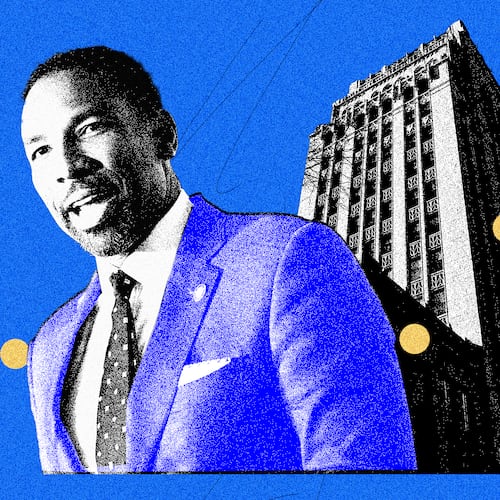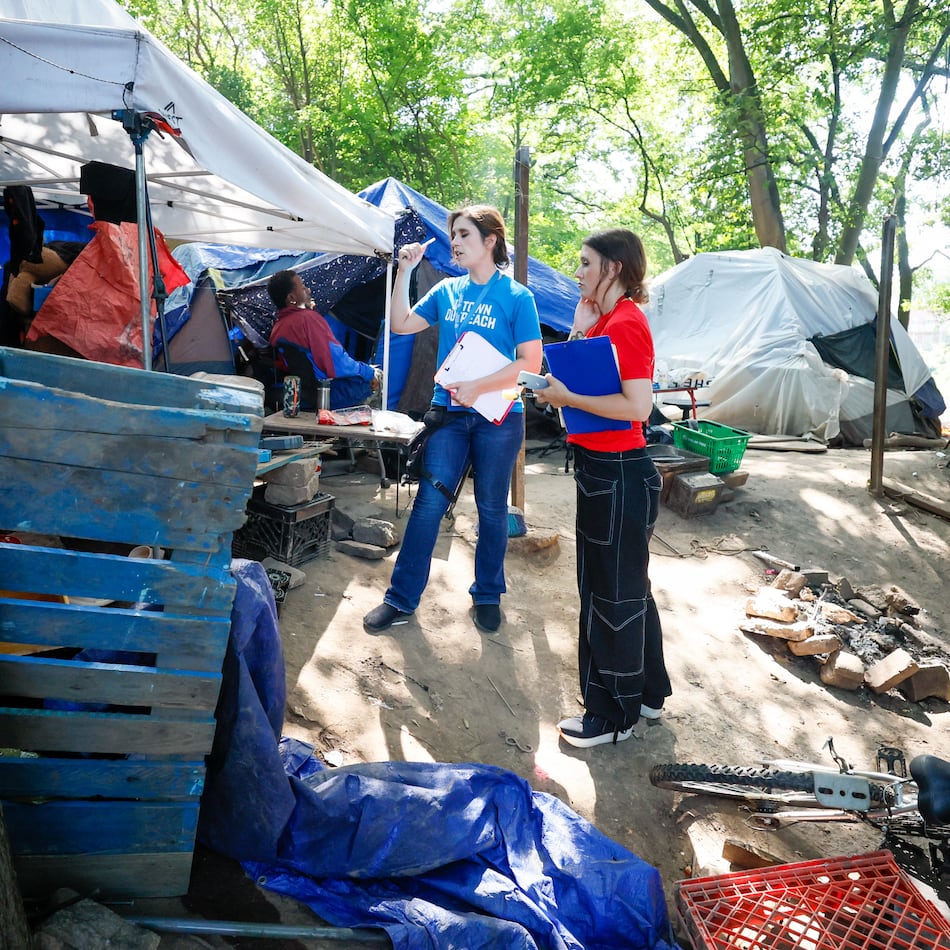Atlanta’s iconic tree canopy is vanishing at an alarming rate. While Atlantans proudly brag that we are the “City in the Forest,” our canopy is shrinking with nearly half an acre of trees lost each day.
Atlanta City Council is working to update its 25-year-old Tree Protection Ordinance with a goal to reverse this tree loss trend and increase coverage to 50% tree canopy.
They’re doing the hard work of balancing valuable, vibrant city growth with the health and financial benefits of tree canopy. And they need Atlantans’ voice and support against well-funded business opponents.
Affordability vs. trees
Commercial developers, opponents of the new Tree Protection Ordinance, argue that stricter tree protections will stifle affordable housing development, framing the debate as a choice between homes and trees.
This is a red herring.
The proposed ordinance includes significant carve-outs and fee reductions for affordable housing projects. For example, developers building affordable units can receive up to a 100% waiver of tree removal fees, depending on the proportion and affordability of the units they provide.
While the city aims to add 20,000 affordable housing units by 2030, these units represent a tiny fraction of the region’s total development. Many other more forceful dynamics are escalating housing costs upward.
The real issue is that, for too long, developers have paid far less than the true cost of replacing lost trees, leading to unchecked clear-cutting and a steady erosion of our canopy. The new Tree Protection Ordinance seeks to correct this imbalance. This does not halt affordable housing; instead it ensures that development and environmental stewardship go hand in hand.
Builders are charged recompense fees as a reimbursement to the city when healthy trees are destroyed. These fees fund the replanting of new trees and the purchase of forests to conserve as public parks so that the benefits of trees can be returned to the public at some scale.
In the new ordinance, the fee is reduced for affordable housing and is corrected to current costs for market rate developments. The recompense fee has not been adjusted for inflation or actual costs since 2001. That means the outdated fee covers only 10% of the actual cost of planting a tree.
The fee neither fully funds recompense nor deters removal of healthy trees.
Measurable impacts
Supporting the adoption of an improved Tree Protection Ordinance and expanding Atlanta’s tree canopy delivers far-reaching financial and health benefits:
- Environmental health: Trees filter air pollution, reduce urban heat, sequester carbon, combat climate change and absorb stormwater, which mitigates flooding and improving public health.
- Economic value: A healthy canopy increases property values, correlates with higher business revenue and reduces energy costs by providing shade and cooling.
- Community resilience: Trees foster a sense of place, provide critical habitat for urban wildlife and promote better mental and physical health outcomes, making neighborhoods more livable and attractive for people who live here or aspire to move here.
Making progress
The city submitted the latest draft of the Tree Protection Ordinance to the City Council three months ago. While we would like it to be stronger on some points, Trees Atlanta agrees with much of it. We see a few key issues that are important to address and can support its approval with these changes made.
Our recommendations have been shared with the city and the City Council, and we hope that they are reflected in the next version. We are all waiting for the next (and hopefully final) version to be submitted to the City Council without further delay.
If you agree, tell the City Council that this is what we need and to pass a better ordinance now.
Key issues we’re watching:
- Match the discount for fees to the percent of the development that is actually affordable housing.
- Limit use of the Tree Trust Fund to 20% of annual fees for staffing costs and invest the rest for replanting trees and preserving existing forests.
- Require preservation of existing trees on development sites.
- Adjust recompense fee to the assessed 2019 costs of $260 per inch.
- Return the protection of trees in stream buffers
Call for action
- Contact citycouncil membersrs: Ask them to close the gaps on tree protections and pass a better ordinance that preserves more trees and replants trees without delay.
- Submit public comments: Residents can email Community Development/Human Services committee members and the Department of City Planning at treeordinance@atlantaga.gov.
- Attend public meetings: The next Community Development/Human Services committee meeting is Tuesday and the full council session is May 19, where the ordinance is expected to come up for a vote.
Learn the latest updates on the Tree Protection Ordinance, including upcoming city council meetings, at treesatlanta.org/news/tpo-2025-gaps-in-tree-protection.
Don’t be distracted by false choices. Call for action from your elected officials and help keep Atlanta a growing, vibrant City in the Forest.
Credit: Greg Levine/contributed
Credit: Greg Levine/contributed
Greg Levine is the Executive Director of Trees Atlanta, a conservation nonprofit that protects and conserves Atlanta’s urban forest by planting, conserving, and educating.
About the Author
Keep Reading
The Latest
Featured




